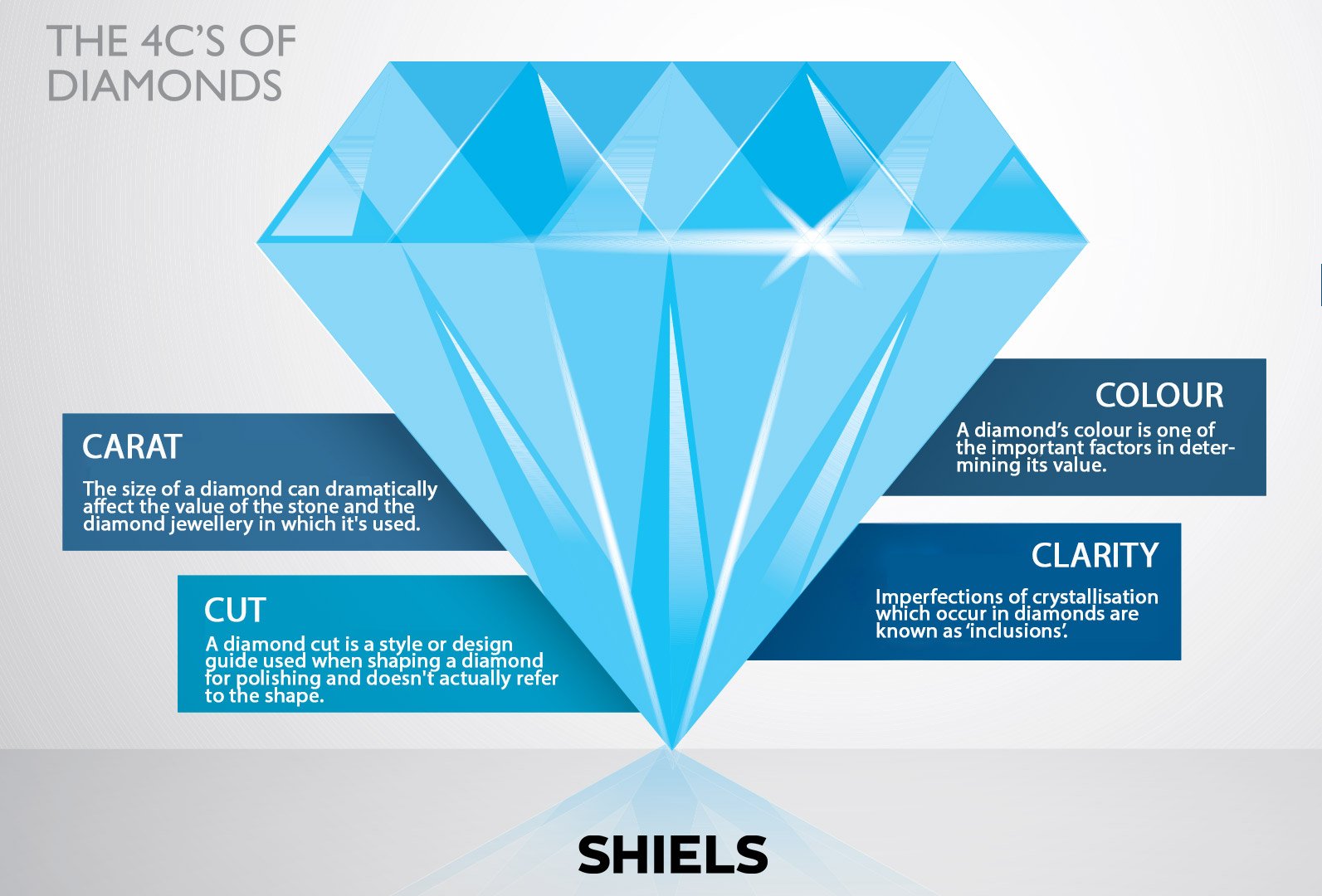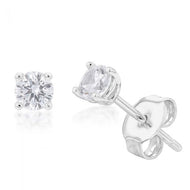Is a lab-created diamond a real diamond? It's an age-old question in the jewellery industry. The short answer: Yes, lab-grown diamonds are identical to natural diamonds. The only difference is how they are grown. One is grown in a lab while the other is pulled from deep within the earth. Both diamonds feature exactly the same chemical makeup and physical properties.
Lab-grown diamonds essentially replicate the grown process of natural diamonds but cost up to 40% less. So, how do they compare if they are identical? Let's take a closer look. Click the links below to jump to a section or read on to find out all you need to know about lab-created diamonds.
Overview:
- Do man-made diamonds look real?
- Are man-made diamonds as good as real diamonds?
- Do lab-grown diamonds have flaws?
- About inclusions in diamonds
Do Man-Made Diamonds Look Real?
Lab-grown diamonds have the same chemical, physical and OPTICAL makeup as natural diamonds. Therefore, man-made diamonds look real because they are real. They shine as bright as those natural diamonds sourced within the earth.
The two even match up the same on the Mohs Hardness Scale - the metric used to measure the hardness of a substance. Both lab-created diamonds and natural diamonds rank as a 10 because diamonds are the hardest mineral on earth. This means they are extremely durable and you can take comfort in knowing that they will stand the test of time. Lab-grown diamond earrings and lab-grown diamond pendants are the perfect pieces of diamond jewellery to hand down to future generations.
The only real difference to tell the difference between lab-grown diamonds and real diamonds is to look at the grading report. Even some of the most experienced jewellers struggle to tell the two apart. It takes sophisticated testing equipment for experts to tell them apart.
They are even graded and certified using the same process. The Four Cs of Diamonds is used to determine the quality of the cut, clarity, colour, and carat. Both are held to the exact same standards. Learn more about the Four Cs of diamonds in our Diamond Buyers Guide.

Learn more:
Are Man-Made Diamonds As Good As Real Diamonds?
Man-made diamonds are as good as real diamonds because they feature the same properties. They are essentially exactly the same. The only difference between the two is the fact that one is grown in a laboratory while the other is sourced from the earth. The only factor that separates them is the price.
If you're buying a diamond, be sure to do your due diligence and get some documentation. Choose a qualified jeweller who can prove industry membership and provide a grading report. If you have any questions regarding our lab-grown diamond necklaces and other lab-created products, please feel free to visit us in store or contact us for more information.
Like so many commodities, the moment you leave a retailer, your diamond jewellery has depreciated in value. You might know this if you've ever tried to sell second-hand diamond jewellery. While synthetic diamonds offer a cost-effective financial alternative to natural diamonds, they hold very little resale value.
Since natural and man-made diamonds are indistinguishable to even the most well-trained eyes without technology, it is only you that will know that your diamond is lab-grown. Essentially, man-made diamonds are as good as real diamonds because they are real diamonds. If you're in the market for lab-grown diamond rings be sure to check out how they sit in different coloured metals. Of course, our lab-created yellow diamond rings timeless but have you seen how a white gold lab created diamond ring or a rose gold lab created diamond ring can sparkle?
Do Lab-Grown Diamonds Have Flaws?
Of course, lab-grown diamonds are at the mercy of science so there is no way to guarantee a perfect diamond. This is the same for natural diamonds. However, the clarity of a man-made diamond is likely to be perfect while a mined diamond is likely to have internal flaws.
The two processes of growth are extremely similar apart from the fact that the man-made environment allows the lab-grown diamonds to produce at a much faster rate. Interestingly, this does not affect the quality of the diamond whatsoever.
In fact, there are actually two ways to produce lab-grown diamonds. These methods are called HPHT and CVD. High-pressure, high-temperature diamond (HPHT) growth is designed to replicate the conditions of natural diamond growth. And chemical vapour deposition (CVD) starts with a diamond seed and derives carbon from a vapour to grow into a diamond.
Nearly all diamonds have inclusions of some sort. Some of which can be seen with the naked eye and some require technology to identify impurities. It really all comes back to the Four Cs Grading system so if you're interested in finding out how your diamond is graded please refer to our chart above or contact us.

Inclusions In Diamonds
Contrary to popular belief, inclusions in diamonds are not bad things. They are only bad if you know they are there and you overpay for your diamond. Inclusions can also be a great shopping tool to help you get the characteristics you want most while staying within budget. This is why it is so important to question the diamonds you purchase. Be aware of where they come from and how they are cut and graded.
If your diamond has minor imperfections that don't take away from the sparkle or appearance of the ring in significant ways and you're able to obtain it at a price that benefits all parties, you can't really go wrong. No one except jewellers really ever inspects your ring under magnification anyway.
More About Lab-Grown Diamonds:
- What Is A Lab Grown Diamond?
- How Are Man Made Diamonds Created?
- Diamond Simulant vs Lab Created
- Do Lab Grown Diamonds Last?
- Are Lab Created Diamonds A Good Investment?

